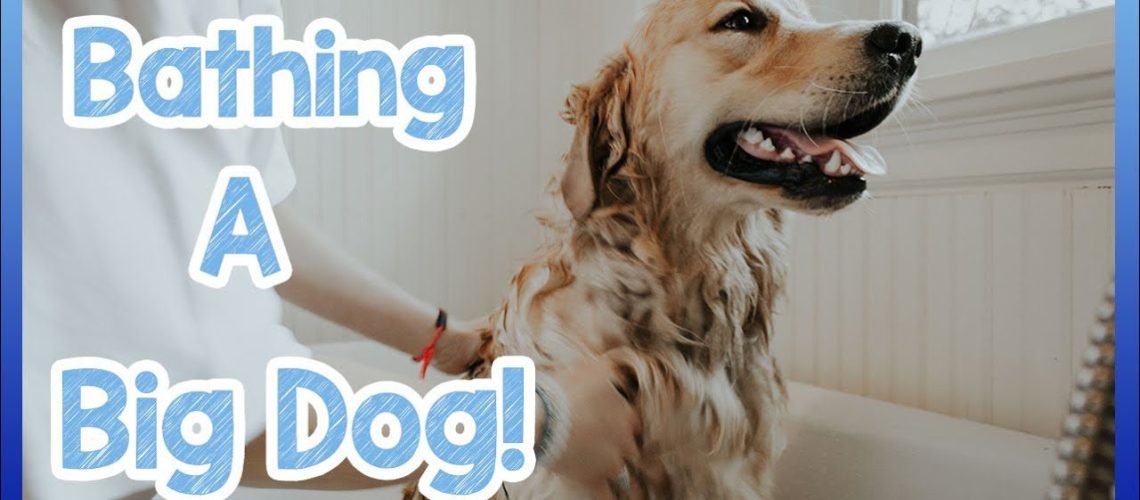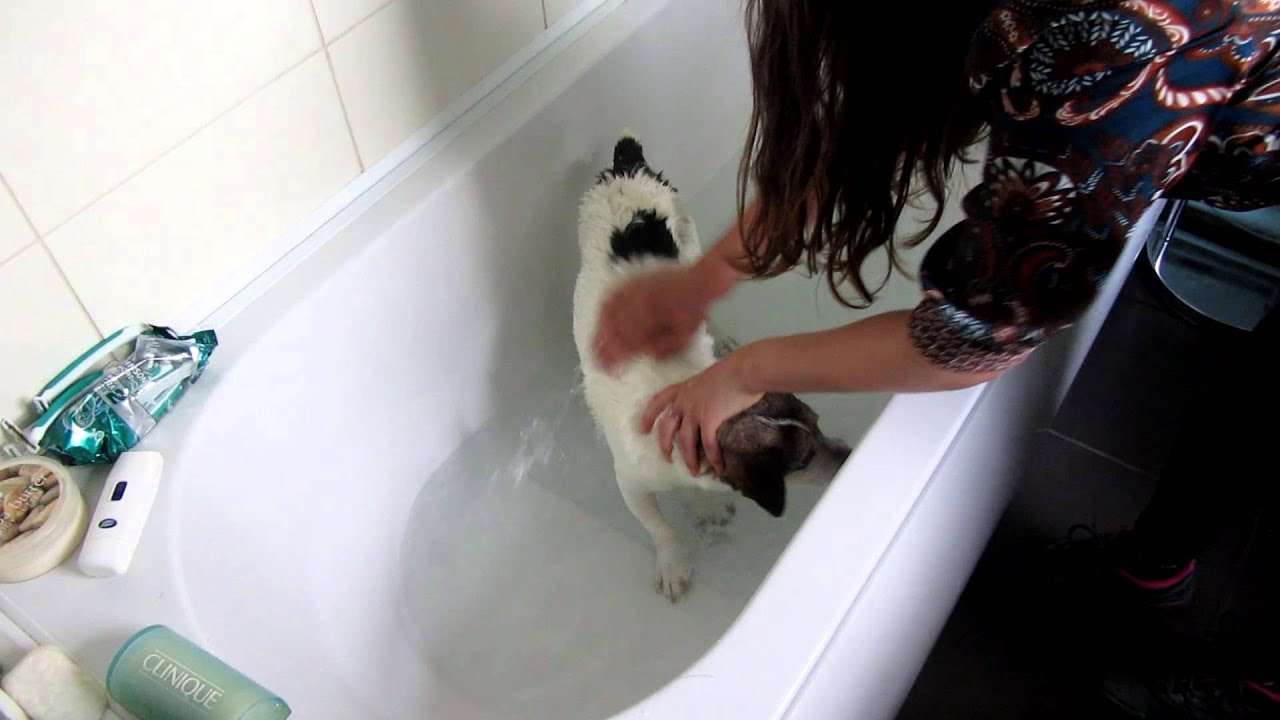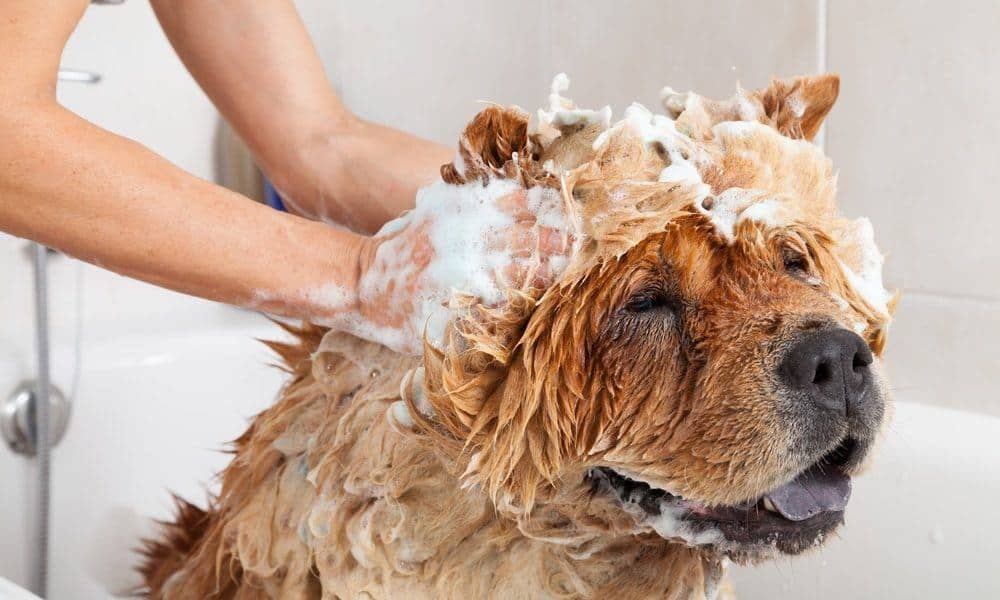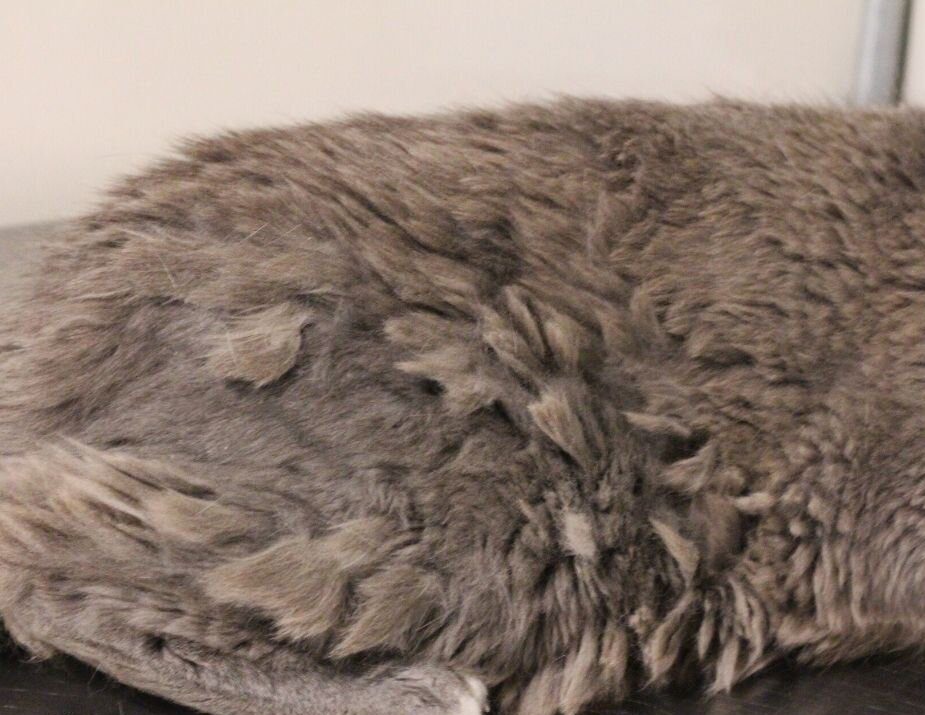In this guide, we will provide you with simple yet effective steps to ensure a pleasant bathing experience for your furry friend. Discover the best techniques and tips on how to bathe your dog effortlessly and keep them clean and happy.
Key Takeaways:
- Use lukewarm water to avoid discomfort or burns for your dog.
- Choose a dog-specific shampoo that is gentle on their skin and coat.
- Securely place a non-slip mat in the tub to prevent accidents and ensure stability.
- Gently massage the shampoo into your dog's fur, avoiding sensitive areas like eyes and ears.
- Dry your dog thoroughly with a towel or blow dryer on a low heat setting to prevent chilling or skin issues.
Why is it important to keep your dog clean and give them regular baths?
Keeping your dog clean and giving them regular baths is essential for their overall health and well-being. Just like humans, dogs can get dirty and accumulate dirt, dust, and debris on their fur. This can lead to skin irritations, infections, and unpleasant odors. Regular baths help remove these impurities from your dog's coat, keeping their skin healthy and preventing any discomfort or itchiness.
Bathing your dog also helps in maintaining a clean living environment for both you and your pet. When dogs are not regularly bathed, they can bring dirt, allergens, and parasites into the house. These unwanted guests can cause allergies or even infestations in your home. By keeping your dog clean through regular baths, you minimize the risk of these issues occurring.
In addition to hygiene benefits, bathing your dog provides an opportunity for you to bond with them. Many dogs enjoy the sensation of being bathed and find it relaxing. It allows you to spend quality time with your furry friend while ensuring their cleanliness at the same time.
Signs that indicate your dog needs a bath
Dogs do not require frequent baths like humans do; however, there are certain signs that indicate when it's time for a bath:
- Your dog has a strong odor: If you notice an unpleasant smell coming from your dog's coat even after brushing or airing them out, it may be time for a bath.
- Your dog's fur looks dirty or greasy: If you see visible dirt or grease on your dog's fur, especially in areas prone to getting dirty such as paws or belly, it's a sign that they need a bath.
- Your dog has dry, flaky skin: Dry and flaky skin can be a sign of poor hygiene or an underlying skin condition. Regular baths with moisturizing shampoo can help alleviate this issue.
- Your dog has been rolling in something smelly: Dogs love to explore and sometimes they roll in unpleasant things like dead animals or feces. If your dog comes back from their outdoor adventure smelling foul, it's definitely bath time.
It's important to note that each dog is different, and factors such as breed, coat type, and activity level can affect how often they need to be bathed. Consulting with your veterinarian will help determine the ideal bathing frequency for your specific dog.
How often should you bathe your dog and where can you find the supplies?
Determining the frequency of baths
Determining how often to bathe your dog depends on several factors, including their breed, activity level, and overall health. Generally, dogs with short coats may only need a bath every 2-3 months, while dogs with longer or thicker coats may require more frequent bathing every 4-6 weeks. However, it's important to note that over-bathing can strip their skin of natural oils and cause dryness or irritation. Consulting with your veterinarian can help determine the ideal bathing schedule for your specific dog.
Finding the right supplies
To properly bathe your dog, you'll need a few essential supplies. These can be easily found at pet stores or online retailers. Some must-have items include:
- Dog shampoo: Choose a gentle, pH-balanced shampoo specifically formulated for dogs to avoid skin irritation.
- Towels: Have several towels handy to dry your dog after the bath.
- Brush or comb: Depending on your dog's coat type, you may need a brush or comb to remove any tangles or mats before bathing.
- Non-slip mat: Placing a non-slip mat in the bathtub or shower floor will help prevent accidents and keep your dog secure during the bath.
- Treats: Rewarding your dog with treats during and after the bath can make the experience more positive and enjoyable.
Remember to always use products designed for dogs as human shampoos and soaps can be harmful to their skin.
Preparing your dog before a bath for a positive experience
Brushing before bathing
Before starting the bath, it's important to brush your dog's coat thoroughly. This helps remove any loose hair, tangles, or mats, making the bathing process easier and more effective. Use a brush or comb suitable for your dog's coat type and gently work through any knots. This pre-bath brushing session also serves as an opportunity to bond with your dog and calm them before the bath.
Trimming nails and cleaning ears
While preparing your dog for a bath, take the time to trim their nails if needed. Long nails can cause discomfort during the bath and may scratch you or your tub. Additionally, check their ears for any signs of dirt or wax buildup. If necessary, gently clean their ears using a veterinarian-approved ear cleaner and cotton balls.
Creating a calm environment
To ensure a positive bathing experience, it's crucial to create a calm environment for your dog. Choose a quiet area in your home where you can easily access water and supplies without distractions. Close doors or use baby gates to prevent your dog from escaping during the bath. Playing soft music or using aromatherapy diffusers with calming scents like lavender can also help create a soothing atmosphere.
By following these preparation steps, you can set the stage for a successful and enjoyable bathing experience for both you and your furry friend.
The best location in your home to bathe your dog and why it's important
Choosing an appropriate bathing area
When deciding on the best location in your home to bathe your dog, consider factors such as size, accessibility, and ease of cleanup. The ideal options include:
- Bathtub: Most pet owners find that using their bathtub is convenient due to its size, accessibility, and ability to contain water splashes.
- Walk-in shower: If you have a walk-in shower with low barriers or easy access, it can be an excellent alternative to the bathtub.
- Outdoor space: For larger dogs who enjoy being outside, washing them in an enclosed outdoor area can be a practical choice. However, ensure the weather is suitable and use a hose or portable shower attachment.
Why location matters
Choosing the right location for bathing your dog is important for several reasons. Firstly, it ensures your dog's safety and comfort during the bath. A secure and familiar environment can help reduce anxiety and make the experience more enjoyable for them. Secondly, having a designated bathing area makes cleanup easier as you can contain water splashes and prevent messes in other parts of your home. Lastly, using a specific location for baths helps establish routine and consistency, making it easier to train your dog to cooperate during future bathing sessions.
Remember to always supervise your dog during the bath and never leave them unattended, especially if they are not accustomed to being bathed in that particular location.
Step-by-step guide for bathing your dog
1. Prepare the bathing area: Gather all necessary supplies within reach, place a non-slip mat in the tub or shower floor, and adjust water temperature to lukewarm.
2. Brush your dog's coat: Use a brush or comb suitable for their coat type to remove any tangles or mats.
3. Wet your dog thoroughly: Use a handheld showerhead or pitcher to wet your dog's entire body, avoiding their face initially.
4. Apply shampoo: Pour a small amount of dog shampoo into your hands and lather it onto their coat, starting from their neck down to their tail. Be gentle around sensitive areas like ears and eyes.
5. Massage and rinse: Gently massage the shampoo into their coat using circular motions to ensure thorough cleaning. Rinse off all shampoo completely, ensuring no residue remains.
6. Clean face and ears: Use a damp cloth or sponge to clean your dog's face, being careful around their eyes and mouth. If needed, gently clean their ears with a veterinarian-approved ear cleaner.
7. Dry your dog: Use towels to pat your dog's coat dry, starting from their head and working your way down. If they tolerate it, you can also use a blow dryer on the lowest heat setting, keeping it at a safe distance to prevent overheating.
8. Reward and praise: Once your dog is dry, reward them with treats and praise for their cooperation during the bath.
Remember to make the experience as positive as possible by speaking in a soothing tone, offering treats throughout the process, and taking breaks if needed.
Tips for washing different parts of your dog's body during a bath
Face
When washing your dog's face, it's important to be gentle and avoid getting water or shampoo in their eyes or ears. Use a damp cloth or sponge to wipe their face, focusing on areas around their muzzle and under their eyes. Be cautious not to rub too vigorously or cause any discomfort.
Ears
Cleaning your dog's ears during a bath helps remove dirt and prevents infections. However, it's crucial to be cautious and gentle when handling their ears. Moisten a cotton ball with an ear cleaner recommended by your veterinarian and gently wipe the visible part of the ear canal. Avoid inserting anything into the ear canal itself as it can cause injury.
Paws
Paws can accumulate dirt, debris, or even small rocks during walks or outdoor playtime. To wash your dog's paws effectively, lift one paw at a time and gently massage them with shampoo while paying attention to the spaces between their toes. Rinse thoroughly to ensure all soap residue is removed.
Sensitive areas
Certain areas of your dog's body may be more sensitive than others. These include the genital area, armpits, and belly. When washing these areas, use gentle motions and be mindful of your dog's comfort. If your dog shows signs of discomfort or anxiety, take breaks and offer treats to help them relax.
By following these tips, you can ensure a thorough and safe bath for your dog while addressing specific areas that require extra attention.
Making the bathing experience enjoyable and calming for your dog
Positive reinforcement
Using positive reinforcement techniques during the bath can help create a pleasant experience for your dog. Offer treats, praise, and gentle petting throughout the process to reward their cooperation. This positive association will make future baths more enjoyable for both of you.
Calming scents and sounds
Introducing calming scents like lavender or chamomile through aromatherapy diffusers or sprays can help relax your dog during the bath. Additionally, playing soft music or using white noise machines can drown out any loud noises that may cause anxiety.
Take it slow
If your dog is anxious or fearful of baths, it's essential to take things at their pace. Gradually introduce them to the bathing routine by starting with short sessions where you only wet their paws or legs. Gradually increase the duration and intensity of each session as they become more comfortable.
Remember that every dog is unique, so it may take time to find what works best for them. Patience, consistency, and positive reinforcement are key in making the bathing experience enjoyable and calming for your furry friend.
| In Summary | |
| Bathing your dog is an important part of their overall hygiene and well-being. It helps keep their coat clean, skin healthy, and prevents odor. | Remember to choose a suitable dog shampoo, gather all the necessary supplies, and create a calm bathing environment. Use warm water, be gentle during the process, and reward your dog for good behavior. |
| A clean and happy dog makes for a happy home! | |
How often should dogs be bathed?
Typically, it is recommended to bathe a healthy dog every one to three months to prevent excessive odor and oil buildup. However, the frequency may vary based on factors such as the breed of the dog. For example, dogs with oily coats like Retrievers may require more frequent baths, possibly every few weeks, to minimize odor. Additionally, daily brushing can help remove hair and distribute oils for the benefit of their coat.
What not to do when showering a dog?
It is not recommended to pour water over your dog's head because it can lead to ear infections due to moisture entering the ear canal. If you need to clean your dirty dog, you can fill up a bath and slowly pour water over them, making sure to saturate their coat and skin.
Do dogs like warm or cold baths?
It is recommended to avoid using cold water when bathing your dog. Using warm water, even for larger dogs, will result in a more cooperative and content pet. Additionally, cold water is not as effective for cleaning.
Do dogs feel better after a bath?
Cleaning your dog's skin and fur removes various substances like dirt, allergens, bacteria, and parasites. It also eliminates dead hair and provides hydration and nourishment to the skin and fur, promoting comfort and reducing itching.
Is Dawn dish soap safe for dogs?
Dawn dish soap is a type of detergent that can be toxic to dogs if they ingest it by licking it off their fur. Even small amounts of the soap over a prolonged period can cause gastrointestinal issues in pets. Common signs of detergent poisoning in dogs include vomiting, diarrhea, and excessive drooling.
What human shampoo can I use on my dog?
In cases of an emergency when you don't have dog shampoo available, baby shampoo is a suitable alternative for cleaning your dog. It is especially recommended for dogs with sensitive skin, as it contains gentler ingredients compared to regular human shampoo. Baby shampoo is specifically formulated for gentle skin care.

















